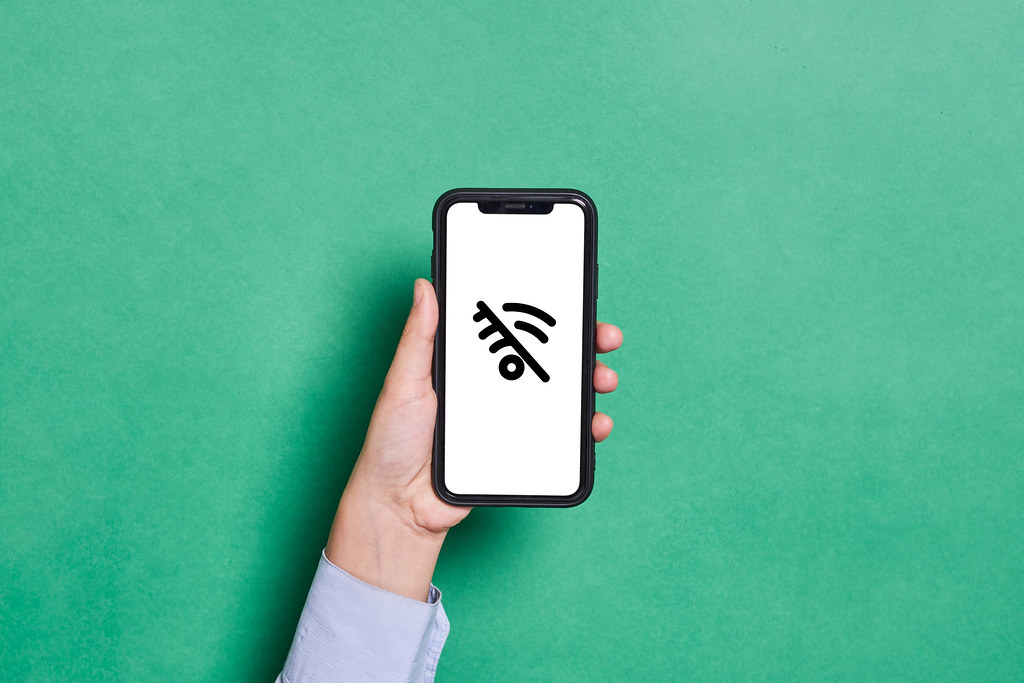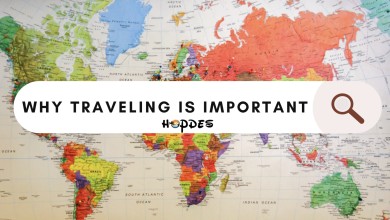
The one-word answer is yes, you can text on a plane using the in-flight internet. However, it’s not that simple to do so. Realistically, it depends on a few things, like the airline’s rules, the Wi-Fi quality on the plane, and the messaging app you use.
In this article, we’ll explain everything you need to know about texting while flying and give you some tips to improve your experience.
Can You Text On a Plane?
Standard SMS messaging doesn’t work on flights as it relies on cellular network connections (which are unavailable during flight). Nonetheless, if Wi-Fi is available on the plane, you can use it to communicate with people on the ground using applications like WhatsApp, Facebook Messenger, iMessage, etc.
The reason for these texting limitations is the aviation industry’s specific rules and regulations that passengers must follow.
How to Send Text on a Plane?
Since you can only use the plane’s built-in Wi-Fi to send a text over apps like WhatsApp, you need to connect with the Wi-Fi first.

Start by enabling your Wi-Fi and connecting to the plane’s Wi-Fi network. Some airlines may offer free access to text messaging when you connect to their Wi-Fi. After connecting to the Wi-Fi, follow the specific steps provided by the airline to activate texting.
For instance, Alaska Airlines provides the following steps:
- Activate the Wi-Fi on your smartphone.
- Connect to either the “Alaska_WiFi” or “gogoinflight” network.
- Open your web browser.
- Visit AlaskaWiFi.com.
- Select the “free texting” option.
Other airlines like Delta and Southwest also offer similar services. Once you’re connected, you can send certain types of text messages that work over Wi-Fi.
Editor’s Pick: How many people can travel in 1 Aeroplane? [Latest Seats Analyzed]
Challenges While Texting on a Plane
Texting on a plane comes with its fair share of challenges. Below, you can find a few examples of these.
Firstly, there’s the issue of expense; you might encounter substantial fees for accessing in-flight Wi-Fi. The exact cost depends on your airline and destination. These charges can be hourly, daily, or based on data usage. Further, you might also face additional roaming costs from your mobile carrier when traveling internationally. We’ve already discussed this in the guide to Emirates Business Class.

Another challenge arises from the inconsistency of the Wi-Fi connection. The signal can be unpredictable, sluggish, or shaky due to weather conditions, technical problems, or high demand. These problems can interfere with your ability to send and receive messages smoothly. It will result in communication delays or glitches.
Lastly, disturbances for other passengers. Some passengers may find the use of electronic devices and typing noises distracting. Consider using headphones or earbuds for a quieter texting experience. This happened to me while on my flight to Jeddah. I was using WhatsApp and a constant notification tone bothered the passenger beside me. I then shifted to vibration mode, which is also a fine alternative.
Must Read: Learn If You Can Bring Scissors on Planes [2023 TSA Rules]
Tips and Tricks for Texting on a Plane
Now that you have all the crucial information about handling head-on questions, let’s shift our focus. If you want to text on a plane without facing any challenges, we’ve uncovered valuable tips and tricks to assist you in achieving a smooth texting experience.
Let’s explore them below:
Select the Right Messaging App
When texting on a plane, it’s essential to choose an app designed for internet-based communication. Popular options like Facebook Messenger, WhatsApp, and iMessage work well. Additionally, consider alternatives like Telegram, Signal, or Viber for added features like privacy, encryption, and customization.

Choosing the Right Internet Bundle
Since you can only text via the Internet, you need to choose the right Internet bundle. For example, on my flight to Saudi Arabia, I specifically chose the social package which allowed me to connect to my friends and family over the flight. I could even make video calls 35,000 feet up in the sky. It cost me just around $2 with Saudi Airlines, and I really enjoyed it too.
Sufficient Battery
Before your flight, make sure your smartphone or tablet is fully charged. This provides you with maximum battery capacity to start with. Most devices have a battery-saving mode or low-power mode.

Enabling this feature can extend your battery life by reducing background processes and dimming the screen. Lowering your device’s screen brightness can significantly reduce power consumption. Adjust it to a comfortable level that still allows you to read messages without straining your eyes.
However, most airlines these days give you the option to charge your electronics mid-flight.
Suggested Reading: How to Add TSA Precheck to American Airlines? [Guide]
Can I Use My Phone in Flight?
YES, you can use your phone in flight, but only in Airplane mode. The Federal Aviation Administration (FAA) and Federal Communications Commission (FCC) have banned the use of a cell phone when it is airborne.
According to the standard FAA regulations:
Cellular telephones that are either installed on aircraft or carried aboard must not be in operation while the aircraft is airborne. Once the aircraft has taken off, it is a requirement to power off all cellular phones on board. Breaking this rule may lead to service suspension or the imposition of fines, as specified in 47 CFR § 22.925.
However, the FAA clearly states that:
You may use the WiFi connection on your device if the plane has an installed WiFi system and the airline allows its use – Source: FAA
The FAA is primarily concerned about potential interference with the aircraft’s navigation and communication systems when wireless devices are used in flight.
Many passengers often forget or intentionally ignore switching their phones to airplane mode. Nevertheless, some experts contend that if cell phone signals posed a genuine risk, we would have witnessed numerous incidents.

Reasons Behind Ban on Using Cell Phones
The FCC has implemented a ban on texting and the usage of cellular devices to help mitigate interference with ground-based towers. It appears that utilizing phones (particularly when many passengers rely on their smartphones) can impact the performance of these wireless signals at specific altitudes. This issue is unlikely to arise at the typical cruising altitude of approximately 35,000 feet. However, the possibility of interference with the towers at lower altitudes (around 10,000 feet) exists.
The evidence regarding the impact of personal electronic devices like mobile phones on an aircraft’s navigation and communication systems isn’t definitively clear.
Many of these reports involve outdated aircraft or old systems. There’s still an ongoing debate about whether these systems are genuinely affected. Many experts consider the risk to be low because of the shielding that protects flight navigation systems from electromagnetic interference within an aircraft.
Another aspect to consider is the resistance from passengers about using their phones on a plane. If passengers were allowed to use cellular data, we might have to deal with annoyingly loud phone conversations. It can be frustrating because many people don’t know how to keep their phone volumes down.
However, there will always be some individuals who don’t follow the rules or insist that their call is an “emergency.”
Read Next: Flying for the First Time in Emirates Business Class?
Conclusion
Texting via the Internet on a plane is indeed possible, but it comes with its own set of considerations and limitations. While standard SMS messaging doesn’t work due to the absence of cellular network connections during flight, passengers can communicate using internet-based messaging apps like WhatsApp, Facebook Messenger, or iMessage if the aircraft offers Wi-Fi.
Can You Text on a Plane? - FAQs
No, standard SMS messages typically don’t work on planes because they rely on cellular network connections, and cellular phone usage is generally prohibited during flight. However, if the plane has Wi-Fi, you can use internet-based messaging apps.
The Federal Communications Commission (FCC) bans cellular phone usage on planes to prevent potential interference with ground-based towers. While the risk of interference is considered low, it’s a precautionary measure. The Federal Aviation Administration (FAA) is more concerned about interference with aircraft systems, and they regulate cell phone usage when the plane is on the ground.
To send text messages on a plane with Wi-Fi, enable your device’s Wi-Fi and connect to the plane’s Wi-Fi network. Follow the specific instructions provided by the airline to activate texting. Usually, you’ll need to visit a designated website or app. Different airlines may have slightly different procedures.
Challenges when texting on a plane may include the expense of in-flight Wi-Fi, unreliable Wi-Fi signals, potential roaming charges from your mobile carrier if traveling internationally, and distractions that can divert your attention from important announcements and fellow passengers.
Realistically, it is possible to use a satellite phone to text while you are on a flight. However, it is not legal and prohibited by FAA and FCC.





![Can You Live in a Hotel? Is It Cheaper? [Costs and Flexibility]](https://hopdes.com/wp-content/uploads/2023/10/can-you-live-in-a-hotel-390x220.jpg)